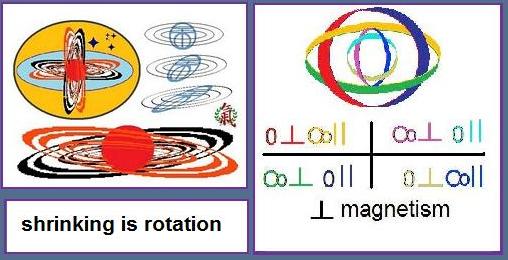
Faith, Fact, and Fiction in Foundational Physics L. Edgar Otto
In my fourth reading, this time with more comprehension, of Peter Rowlands new book, I understood more about that essential part of his description of particles and general statements (some of which I see but do not necessarily agree with) with some rather remarkable terms I have used and many have used on the blog independently. Things like "an M theory without strings." Or more importantly the idea that dimensions can have some various meanings.
In any case in his interpretations leads me to finally understand how some here may see gravity- more like a particular framework describing something like the general idea of inertia. I could not quite feel certain about this link to physicality nor how some of the models and systems conclude it an idea of gravity- but it helps that he has ideas as to (at least on the Planck scale) observe that after all here we expect mass to be related to gravity.
Bloggers, among others, should not assume they have reached a high foundational system in their expertise outside their faith in a model or frame nor]
outside a comprehensive and timeless dialog theirs is one of growth greater than
what thoughts are creative originality- the outside exists too and from my discrete view what inside and that outside can be interchanged.
Yahoo home today linked to an article of how a black hole, once in a million, consumed violently a single star when it had been dormant for so long- this, presumably by tidal forces- resulting in a great burst of gamma rays. Is it not a general observation that an individual so consumed makes a large splash greater in celebrity than a galaxy of others? Yet the question is still there in the article as to how, if consuming an sun like star a black hole grows to zillions of them. Again we need to look into the more fractal like framework.
BTW in my notes I now use Russian b with left bar for FX (fractal-like) and b with right bar on top for HF (holographic like) and HFX a b with a bar thru its top.
One questioning of Rowlands insights is his acceptance of Riemann in that beyond the quadratics, five dimensional spaces, quintic, are not needed (as his emphasis is really on the frame and reason for three space preferred in nature and that such a system as simpler and more restricted- Minkowski 4 and 5D is pointless to erect as a theory in this virial framework. The pentads become the tetrads and so on of the Diracian formalism. These to me are half views as theories.
Of course this allows for Quantum Field Theory to be part of the picture and the emphasis on measure and reductions to classical solutions as still useful. But without a further view even beyond Rowlands (of which others would be surprised coming to some of his same conclusions on space even in the exotic and proudly published new speculative papers) Fact and Fiction can be interchanged.
His discussion of M theory, of the 10 or 11 dimensions is instructive in that the terain is after all one of the 10 units of rest (of the six, I long ago assumed that the 6 left over were electromagnetic in my vague first understanding and now in a mature version in relation to geometric structures I consider this view again)
I do not know, If I have the occasion or need to read him again, that I will do so with greater understanding that seems to grow than I now do- or for that matter what new area he will find- and when those who apply his ideas in his book will catch up to a more comprehensive theory as with the operation of genes.
Would not 11D mean more or less for 32 units (complexly doubled) a sense of 5 space (of which it should intelligibly include the lower string theories I feel)?
In which case the idea of the hypercube of 16 points comes to mind. And from one corner or another corner (at least in 3-space) we have the ten with a sort of hexagonal structure of the six between them. But these six take up four combination's (as useful information beyond contradictions and tautology) the two that determines by experiment Bell's inequality. This is a less than perfect symmetrical consideration. It involves non-locality in terms of what we mean by say he information transmitted by neutrinos as Majorana or not for example. Of course in all this the arrow of time tends toward a preferred direction and the matrix is a combination really of the main diagonal and Jordan areas in it, so the basic now standard concepts of symmetry breaking may still apply as we abstractly and intelligibly divide a structure into sub-structures.
* * *


No comments:
Post a Comment